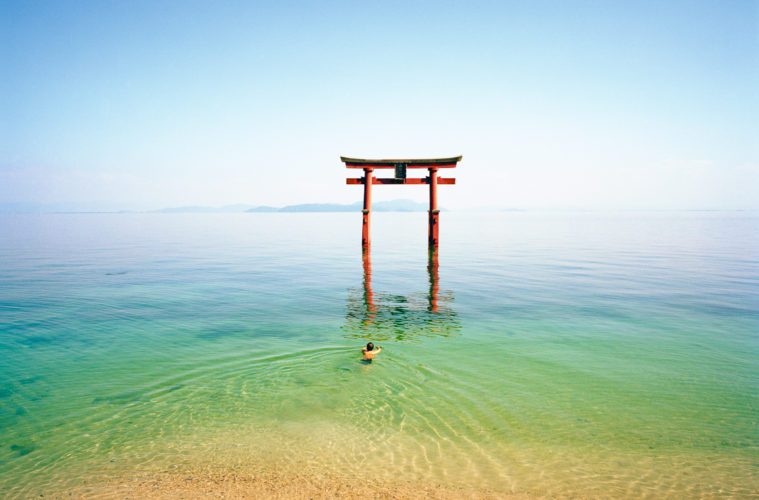Orange Coast College has been known for decades as a major center for the study of photography. This reputation has been forged to a significant degree by the presence of educator/photographer John Upton, who first chaired the college’s photography department in the 1960s. While he departed from OCC in 1999, his legacy there continues to this day.
This first ever solo retrospective of Upton’s work is long overdue, considering his contributions to photography over the years. After studying with Ansel Adams, Minor White, Dorothea Lange and Edward Weston, he created several important photographic series, received a number of awards and will be recognized this March by the Society for Photographic Education as “Honored Educator.” He is also in major collections worldwide, including the Metropolitan Museum of Art.
Upton’s “Right Place, Right Time” exhibition is comprised of 29 of his photos taken over more than 60 years. It also contains extensive wall didactics, photos of Upton throughout his career — some with other photographers, including SoCal-based Robert Heinecken — and several copies of the textbook, Photography, which he co-authored and is now in its 12th edition.
While attending the opening of this seminal exhibition, the 87-year-old Upton was alert, lucid, spry and delighted to discuss his work and multi-faceted life. In an address to dozens of local photographers and other admirers at the show, he talked about his first series, “Early Work.” These black-and-white gelatin silver prints reveal his affinity for mid-20th-century formalism, composition, abstraction and social themes in photography. The pictures also display his skilled use of light and dark, with some of that contrast likely created in the darkroom.
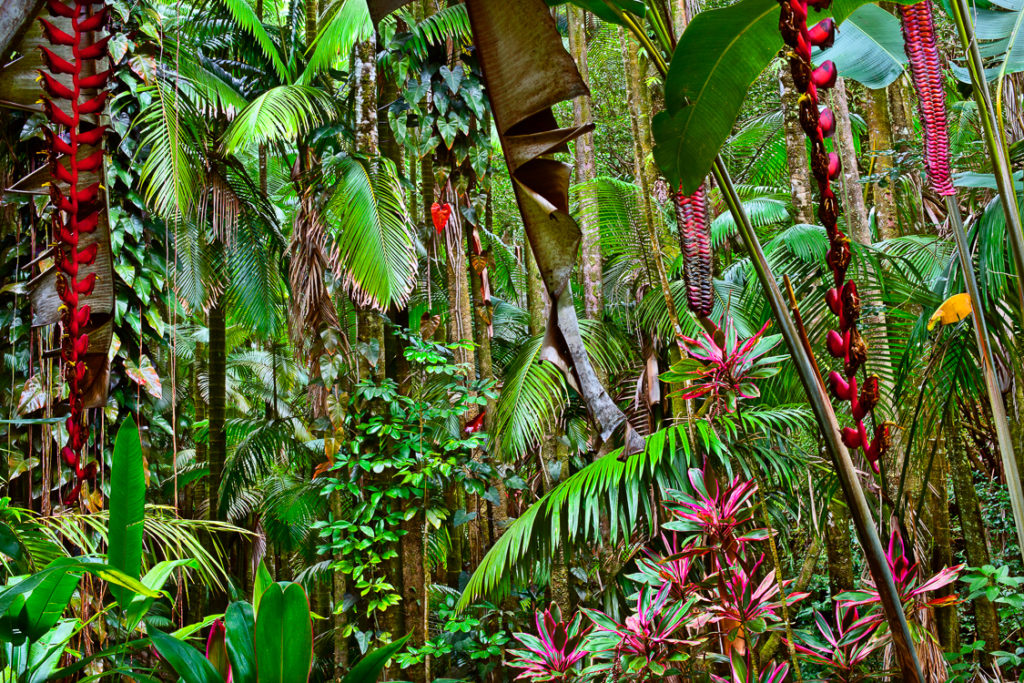
John Upton, Jungle Road (courtesy of Orange Coast College)
Upton’s two images from this series, both titled “Point Lobos Near Carmel, CA,” are close-ups of large rocks and other natural debris. By focusing on the natural yet abstract arrangement of these elements, the artist created stunning tableaux.
His “Death Valley,” a portrait of moving sand that also displays deep afternoon shadows, mimics erotic photos of the nude female figure. Conversely, his “Nude,” an out-of-focus close-up of a nude female, is more a study of female attributes than a sensual composition.
“Portrait of Robert Macaron,” of a working man from the 1950s, is redolent of 1930s-era photos by his mentors. Macaron, the subject in Upton’s picture, is dressed in a laborer’s clothing and displays an intense look; the total effect of this picture evokes the plight of people who worked long hours to support their families.
Years later, Upton traveled extensively throughout Japan, photographing landscapes, urban scenes, storefronts, children and teenagers. His eight “Japanalia” color images from 2000 to 2004 are so contemporary in subject matter, they might have been shot today.
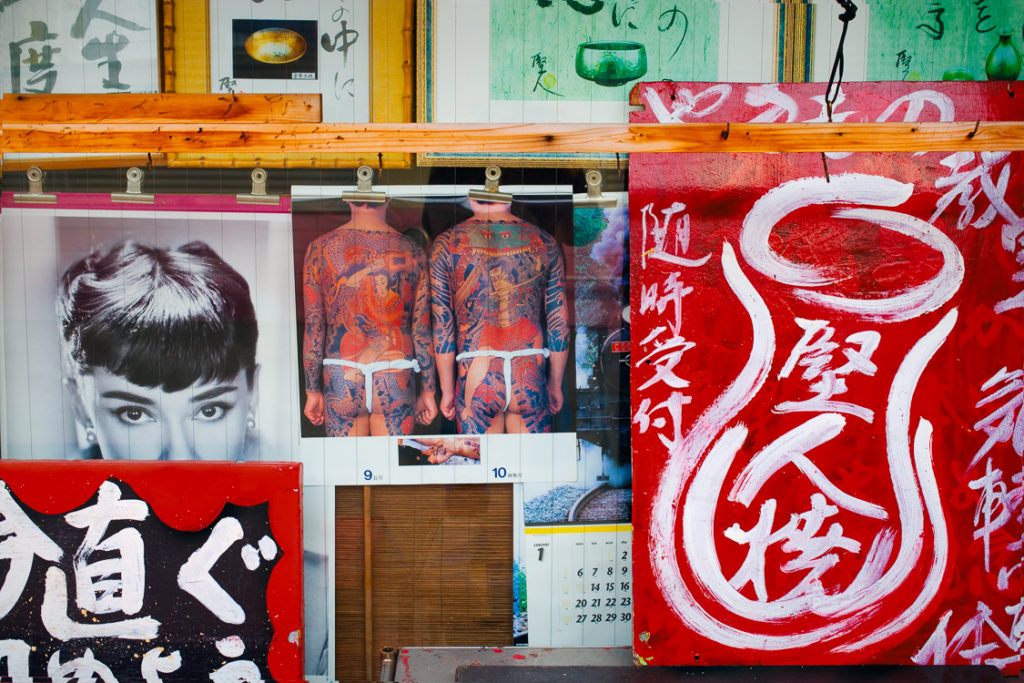
John Upton, Japanalia: Asakusa Window (courtesy of Orange Coast College)
His “Tokyo Teens” portrays a throng of female teenagers, several sporting bleached blonde hair and wearing “Forever 21” style quirky clothing. These smiling young people contrast with the formal and distraught looking Japanese citizens who were photographed during World War II. Upton says that these photos describe Japan “undergoing extraordinary social and cultural change.”
“Politician and Constituents” depicts full-size cutouts of a traditionally dressed Japanese woman, alongside a fashionably dressed man, both facing a poster of a smiling man running for office. This contrast of the established Japan with contemporary society depicts the country during a period of social and cultural transition.
More bucolic is “Pagoda Nara,” illustrating an old-fashioned Japanese temple, nestled among rich green foliage. With this image, Upton appears to be calling up the country’s heritage of painting its pastoral landscapes. His sparer “Swimming Shaman in Lake Biwa” is a pastel impressionist style photo of a lone swimmer in a pale yellow and green lake.
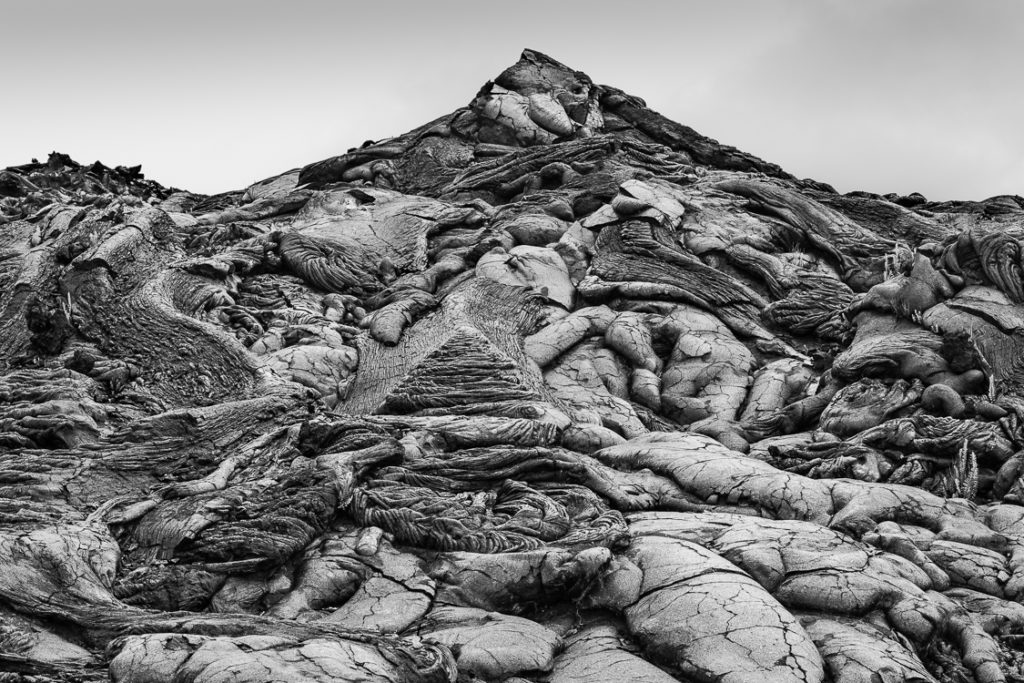
John Upton, Jungle Road, Lava (courtesy of Orange Coast College)
These photos presage Upton’s subsequent “Jungle Road” series, with many images comprised of dense jungles and others of lava flows, all shot in Hawaii from 2005 to 2014. Jack Fulton describes this series in the show’s catalog: “This sequence, made on the island of Hawaii, begins in a jungle that we see as a sparkling dance of floral exuberance, ending in a black and white swell of billowy and undulating lava flow arrested in time.”
Indeed, these photos, with several capturing the dense, overbearing and richly colored green, brown and red foliage, are so intricate, the viewer might perceive them as detailed oil paintings. Conversely, the more meditative lava flow pictures capture scenarios reminiscent of ancient, barren landscapes.
Upton’s most recent “Petaluma” series, with four photos taken since 2018 near his current northern California home, reveals his unceasing desire to continue creating while exploring the world around him. These images, ranging from black and white landscapes to pictures of street signs and murals, include “Hokusai Found in the Alley,” a poster of a painting by the eponymous 18th-century Japanese artist. “Petaluma” then reveals the vision of a photographic artist who continually reinvents himself, while adhering to his lifelong ideals of harmonious composition and meaningful content.
In fact, the panoply and variety of the photographic art pieces by John Upton in this extraordinary exhibition are a testament to the regenerating power of the creative spirit.
“Right Place, Right Time” is on view through April 4, 2020 at Orange Coast College’s Frank M. Doyle Arts Pavilion; Mon.-Thu., 11 a.m.-5 p.m. and first Saturdays, noon-4 p.m.: free. orangecoastcollege.edu.
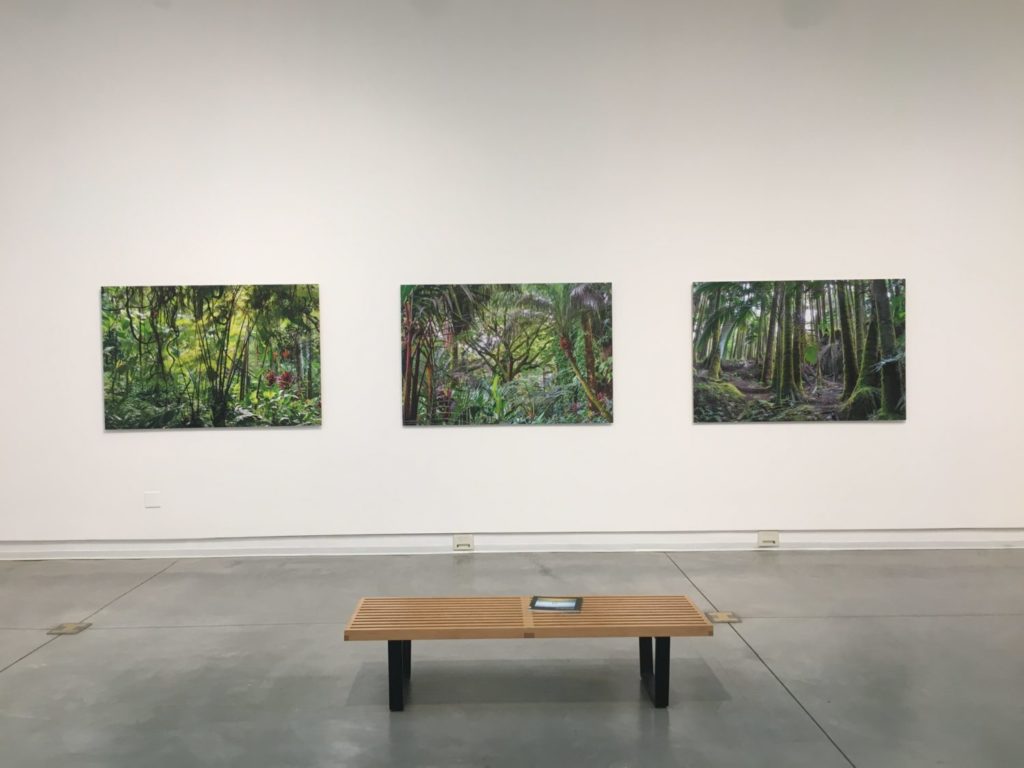
John Upton, Right Place, Right Time, installation view (courtesy of Orange Coast College)
Advertising disclosure: We may receive compensation for some of the links in our stories. Thank you for supporting LA Weekly and our advertisers.

